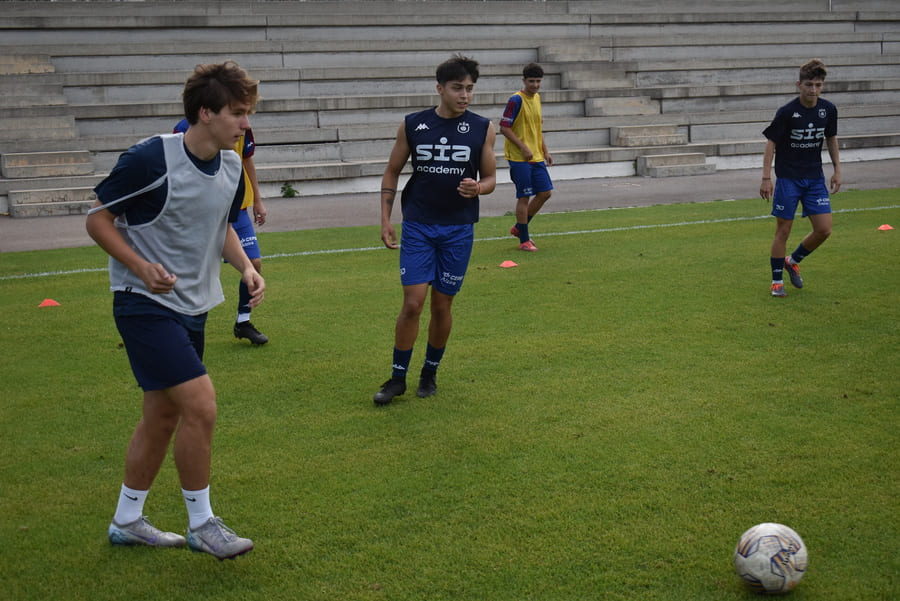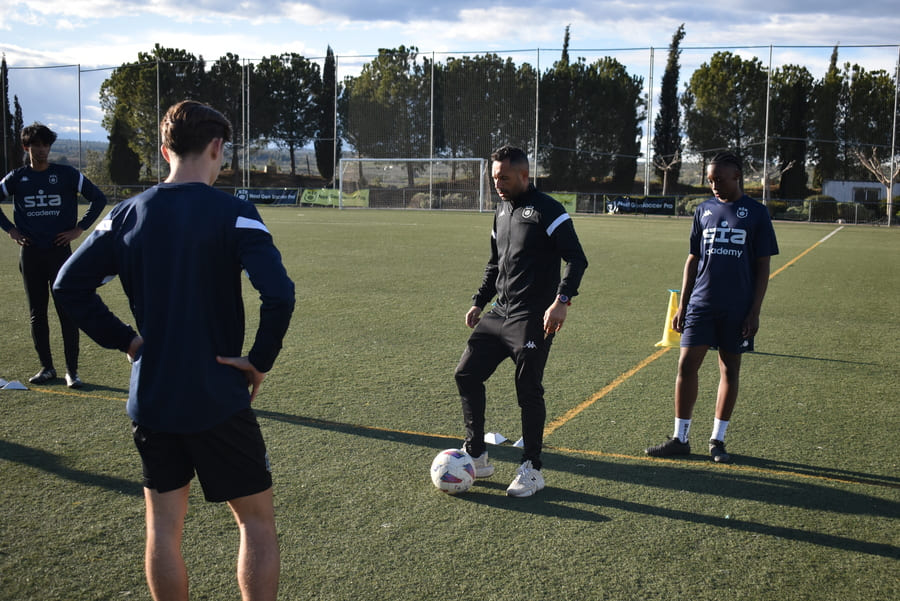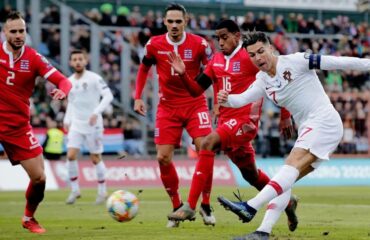Numerical superiority in football refers to situations where a team has more players in a specific area of the pitch than the opponent. When used properly, this advantage allows progress in play, the creation of goal-scoring opportunities, or more effective defending. It is not just about having more players, but about occupying spaces intelligently, reading the game, and making quick decisions. In this sense, the training of young footballers must include specific exercises to develop the ability to generate, recognize, and exploit these advantages.
At SIA Academy, a benchmark in comprehensive football education, numerical superiority is constantly worked on as an essential principle of the game. As José Luis, coach at the academy, states: “Modern football demands players who can understand when and how to create superiorities, because that is where the real differences are made.”
Table of contents
The tactical importance of numerical superiority
Having more players than the opponent in one area does not guarantee success if it is not accompanied by mobility, technical quality, and tactical vision. Footballers must understand that superiority can be:
- Numerical, when there are more teammates than rivals in a given space.
- Positional, when a player receives the ball between the lines or in a strategic location.
- Qualitative, when a footballer has an advantage due to technical or physical abilities over their marker.
At SIA Academy, the aim is for young players not only to master the theory but also to apply these advantages in real match situations.

Small-sided exercises to train decision-making
One of the most common methods at the academy is the use of small-sided games. These are matches played on reduced pitches with unequal teams, such as 3 vs 2 or 4 vs 3. The goal is for players to move the ball quickly, pin down opponents, and find the free man.
An example is the “possession with neutral players” drill. Here, one team plays in numerical inferiority but with the help of neutral players on the flanks or in central zones. In this way, the team with fewer players learns to resist and press, while the team with superiority works on how to exploit it effectively.
José Luis explains: “We insist to the kids that superiority is not static; it has to be created. For that, constant support and mobility are fundamental.”
The role of individual technique
Although the term refers to “numerical” superiority, each player must be prepared to execute oriented controls, accurate passes, and switches of play. If a player fails technically, the numerical advantage disappears.
That is why SIA Academy integrates rondo exercises, technical circuits, and quick finishing drills into training sessions. All of this is done under pressure so that players learn to manage the speed of the game.
Superiority in organized attack
When a team attacks against an organized defense, the key is to move the opponent until space is created. For this, drills such as the following are used:
- Positional attack 6 vs 4: six players must overcome four defenders with the requirement of a minimum number of passes before finishing.
- Conditioned switches of play: exercises where progress is only allowed if a long pass or switch of play is made, forcing players to seek width advantages.
These drills strengthen the ability for patience and intelligent circulation, two aspects that are part of the academy’s teaching style.
Superiority in offensive transition
Another key situation occurs right after ball recovery. At that moment, teams usually find spaces and defensive imbalances in the opponent. Taking advantage of superiority in transition requires quick thinking and technical precision.
At SIA Academy, “conditioned counterattack” drills are used, where a team recovers the ball and has only a few seconds or touches to finish. This way, players internalize that the temporary advantage must be exploited quickly.
Defense also generates superiority
It is important to remember that numerical superiority is also vital in defensive tasks. Drills such as “2 vs 1 to the defender” or “5 vs 4 in a limited zone” allow players to practice cover, support, and shifting.
The goal is for players to understand that good defending is not only about marking your direct opponent, but also about knowing when to help and when to close spaces. This philosophy is applied continuously at SIA Academy, encouraging collective tactical intelligence.

The integral methodology of SIA Academy
The academy combines theory, practice, and video analysis so that players learn to recognize game patterns. In addition, the presence of coaches with professional experience provides an updated vision of modern football.
Young footballers receive training oriented not only toward technical and tactical skills but also toward decision-making under pressure. This is complemented by lectures and analysis explaining how to apply superiorities in different systems of play.
Shaping intelligent players
Numerical superiority is one of the keys to modern football. Mastering it means knowing when to speed up, when to slow down, and how to take advantage of every situation in the game. For developing players, training these dynamics makes the difference between being a correct player and being a decisive one.
SIA Academy has turned this concept into a cornerstone of its methodology, betting on practical exercises that put the footballer at the center of the action. In the words of José Luis: “We want our players to understand the game, not just repeat a movement mechanically. Intelligence and reading superiority are what will make them stand out.”
Ultimately, working on numerical superiority not only improves individual performance but also strengthens collective cohesion and playing style. SIA Academy understands this and applies it successfully, shaping footballers prepared to compete in any environment.






